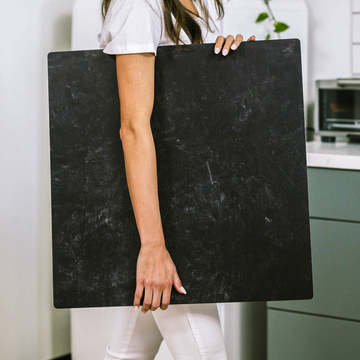When most people think of product photography, they imagine carefully placed lighting, pristine setups, and perhaps a stylish color backdrop. But what if I told you that your choice of backdrop surface isn't just about setting the scene-it's a silent partner, actively sculpting the light, mood, and even color of every shot you take?
The secret for advanced photographers (and those who want to think like them) is to treat every backdrop as so much more than just a passive background. If you’re aiming for truly standout images, it’s time to explore how your surfaces interact with light, shadow, and color.
Surfaces Are More Than a Background
Every surface in your studio-from glossy marble to chalky concrete-handles light differently. The way your backdrop bounces, scatters, or absorbs light can transform the look and feel of your product images in unexpected ways.
- Glossy backdrops act like subtle mirrors, lending crisp highlights and adding drama to products like glassware or jewelry.
- Matte finishes diffuse light, creating a gentle, even effect with minimal sharp shadows. They’re perfect for food, crafts, and anything you want to feel warm and approachable.
If you angle your surface-especially a glossy one-just right, you can fill in shadows naturally, highlighting the details in your subject. Light and surface work together to bring out the best in each product shot.
Texture: The Subtle Storyteller
Have you ever zoomed in on your images and noticed a touch of tactile richness? That’s the magic of microtexture. Even surfaces that appear smooth can have tiny details that scatter light and enhance how a product looks on camera.
- Want sleek and modern? Try super-smooth or polished surfaces to accentuate clean lines.
- Looking for warmth and authenticity? Textured wood, linen, or hand-painted boards introduce depth and make products feel tangible-even through a screen.
Try challenging yourself: shoot the same object on both a matte board and a rough plank. The difference in micro-shadows and perceived depth will surprise you.
Color Accuracy: The Science Behind the Scenes
Getting color right goes beyond just picking a background that “matches.” Surfaces reflect specific wavelengths based on their finish and color. With modern LED lights, subtle shifts can happen-sometimes making your product appear slightly off in hue or saturation.
- Set your camera’s white balance with your actual surface in frame, not just a generic card.
- Use a color checker for the most accurate results-this is especially important for brands that depend on color consistency.
What happens on your surface can make or break color fidelity-critical for e-commerce and catalog shots.
The Third Dimension: Backdrops With Shape
Not all backdrops are flat and featureless. Some surfaces have ridges, visible grains, or even gentle curves. These qualities add subtle dimension to your photos and can change how light wraps around your products.
- Textured tiles and 3D panels create miniature shadows and highlights, giving an extra layer of sophistication to your images.
- Flexible surfaces let you create infinity curves-seamless, shadow-free backgrounds that elevate your product shots from average to professional.
Consistency and Reliability: Choosing the Right Surface Material
You might not realize it at first, but the choice of material matters for repeat results. Over time, paper can yellow, cheap plastics can warp, and some woods can change tone or texture.
- High-quality synthetic materials like coated PVC or acrylic offer lasting color and stability-ideal for batch shoots and repeatability.
- Natural materials have unique character but may shift in color or finish. This can be a feature or a flaw, depending on your brand’s aesthetic.
Consider building a toolkit of surfaces for different effects-then test each under your lighting to see how they hold up over time.
Bring Your Photos to Life With Smarter Surfaces
Just as you wouldn’t settle for a single lighting setup or one lens, don’t treat surfaces as an afterthought. Experiment, take notes, and let your backdrop do more heavy lifting in your visual storytelling.
Ultimately, recognizing your photography surface as a powerful tool puts you ahead of the curve. Fine-tune your shoots by:
- Shooting the same product on different surfaces and comparing light, shadow, and feel.
- Cataloging outcomes so you know which surface brings out the best for each type of product.
- Investing in surfaces that reflect your brand's values-whether that's consistency, authenticity, or creative flair.
Your backdrop isn’t just a background-it’s your secret stylist, light shaper, and color expert all in one. Ready to share your own discoveries, questions, or challenges? Drop a comment below with a photo of your favorite setup and let’s unlock the creative potential of your studio together!



